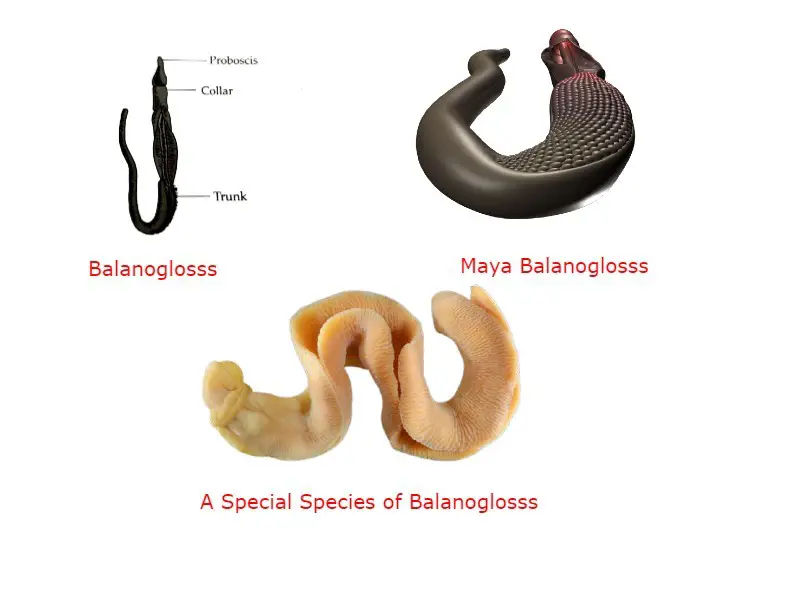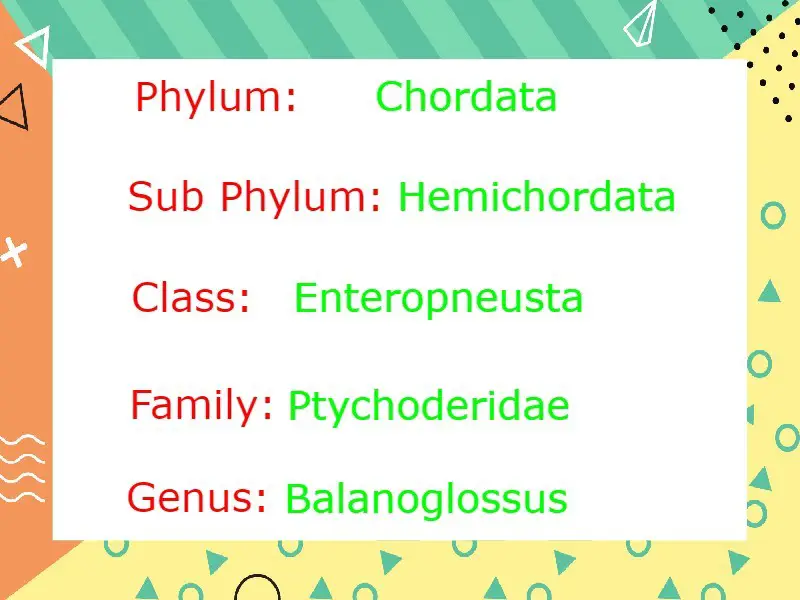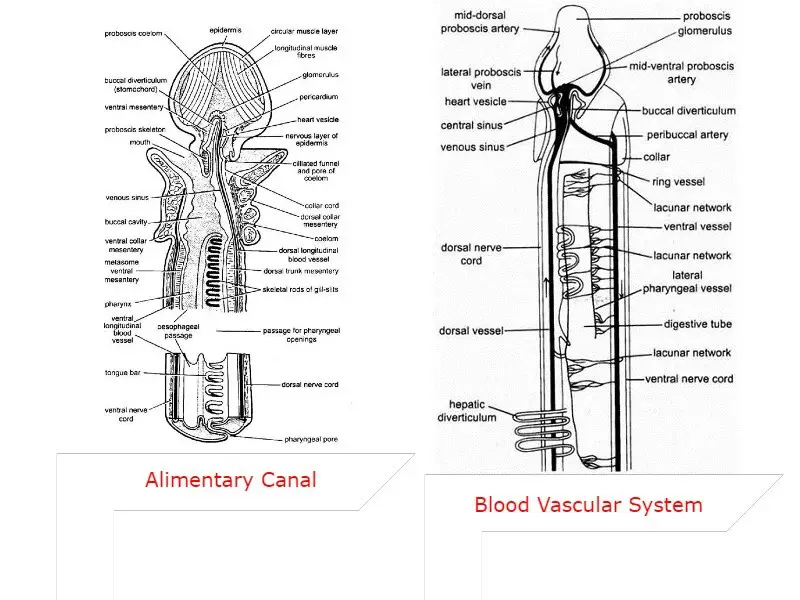Balanoglossus show similarity with Echinodermata in many aspects both in the larval stage as well as in the adult stage and we will list all the phylogenetic similarities or affinities of Balanoglossus with Echinodermata.
Affinities of Balanoglossus with Echinodermata in Adult Stage:
There is a little resemblance between the adult Balanoglossus and adult Echinodermata, if we do not observe very carefully then Echinodermata and Balanoglossus are completely different in structure in the adult stage. But when we study carefully then we will find some relationship between Balanoglossus and adult Echinodermata, we listed all those similarities in below —
- In Echinodermata the development of coelom occur from the archenteron of the embryo, so the coelom in Echinodermata is enterocoelous type. The enterocoelom is also present in Balanoglossus and the three separate cavity of coelom is also present in both Balanoglossus and Echinodermata.
- The nervous system in both Balanoglossus and Echinodermata is not well developed in both cases the nervous tissue make nerve plexus below the epidermis ( Epidermal nervous system).
- Heart vesicle or cardiac sac in Balanoglossus perform similar functions as that of the function of dorsal sac of Echinodermata. In Balanoglossus the glomerulus perform the function of excretion which is considered analogous structure of axial gland of Echinodermata.

- Balanoglossus and Echinodermata show resemblance in some biochemical, protein and phosphagen of Balanoglossus and Echinodermata show great resemblance.
- In habitat both Echinodermata and Balanoglossus show great similar through it is not a significant similarity among them.
- Ecologically Echinodermata and Balanoglossus show much similarity in their niche and it indicates a close relationship between Balanoglossus and Echinodermata.
- Balanoglossus have great power of regeneration, one fragments of body can give rise to the whole body in Balanoglossus. Echinodermata also show regeneration, in both Balanoglossus and Echinodermata regeneration is a method of vegetative reproduction.
Affinities of Balanoglossus with Echinodermata in Larval Stage:
The larval stage of Balanoglossus shows a very high level of similarity with the larva of Echinodermata. The tornaria larva of Balanoglossus shows so much similarity with bipinnaria larva of Echinodermata that some worked thought tornaria larva as the larva of Echinodermata.
But later some workers find that the tornaria larva is enteropneust so they neglected the resemblance between Balanoglossus and Echinodermata. Now we will list those similarities between Tornaria larva and Bipinnaria larva which makes the scientists confused as they belong to the same phylogenetic group —
- Shape of the larva of Echinodermata and Balanoglossus, especially the tornaria larva and Bipinnaria larva of Echinodermata have a small, oval shape and both are transparent.
- Both have well developed coelom and they are enterocoelous with similar cilary bands.
- Dipleurula larva of Echinodermata have hydrocoel which have similarity with the proboscis coelom of Balanoglossus.

- Echinodermata and Balanoglossus show great resemblance in their digestive system in larval stage, in both the digestive system is complete with mouth and anus.
- During embryonic development blastopore form the anus in both Balanoglossus and Echinodermata so both of them are dueterostome.
- Echinodermata and Balanoglossus show similar type of habitat in their larval stage. In larval stage they are both pelagic and they live in marine environment.
Objections:
Though both Balanoglossus and Echinodermata show many similarities in different aspects in both adults and larval stage there are some dominant differences between them.
- Most important features in Tornaria larva of Balanoglossus are telotroch, apical plate, eye spot which are not present in larval stage of Echinodermata.
- The protocoel or coelom of proboscis is single small cavity in Balanoglossus but in case of Echinodermata the protocoel is paired.

So if we consider all the differences between the Balanoglossus and Echinodermata then we can not place them in a single group. It is true that they show many similarities but it doesn’t prove that they are under a similar phylogenetic group. The similarities may be a result of convergent evolution because both Echinodermata and Balanoglossus live in similar environmental conditions.
Reference:
Detailed Information on
What is Balanoglossus: A Tongue Worm
External Morphology of Balanoglossus
Coelom and Coelomic Fluid in Balanoglossus
Digestive System of Balanoglossus
Respiratory System of Balanoglossus
Blood Vascular System of Balanoglossus
Balanoglossus: Excretory, Reproductive and Nervous Systems
Affinities of Balanoglossus with Chordata
Affinities of Balanoglossus with Rhynchocephalia, Phoronida, and Pogonophora
Hi Everyone!!! Welcome to Imaluop. Imaluop always try to learn some new and he want to share to other people. Here we will try to learn various topics on Science, specially on Biological Sciences.
